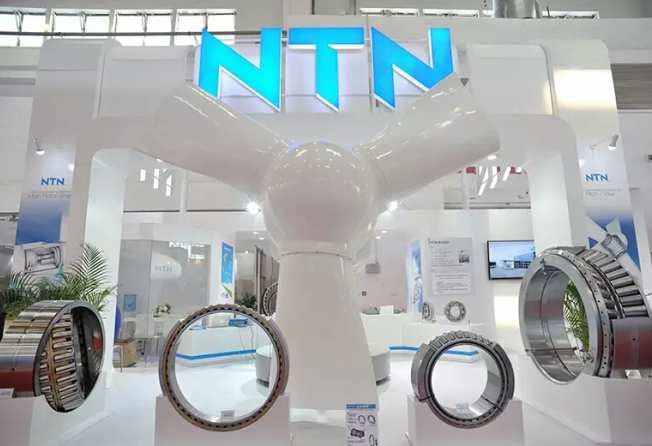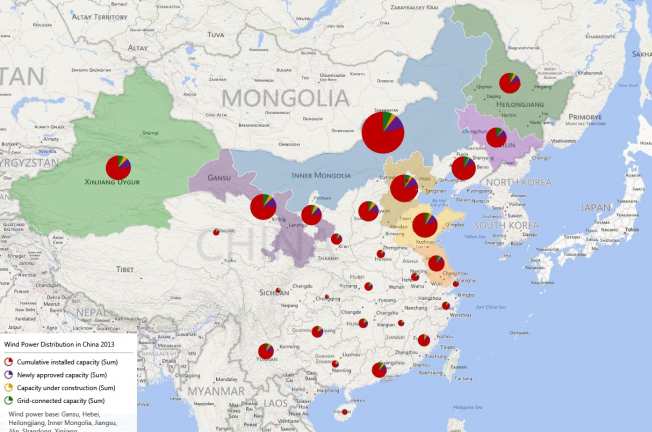by Rui Hu
This blog is based on the interviews with Chinese stakeholders and a conference paper “A multi-dimensional indicator framework for evaluating energy technology innovation system” submitted to DRUID 2016.
In October, I conducted my first fieldwork in Beijing and participated the China Wind Power Conference 2015 (CWP). The purpose of this trip was to carry out semi-structured interviews with Chinese academics, policy researchers and enterprise managers to understand how China’s wind technology innovation system operates and evolves.
China has achieved remarkable progress in economic development over the past decades. Among many successful factors, the openness of national innovation system and the growth of technological capability may represent the real bases of China's economic miracle. It is observed that more and more innovations are being seen in China[i], such as super computers, high-speed railways, Beidou Navigation System, and nuclear technology. The emergence of China as an innovator can confirm that the country is an absorptive state and innovates by combing rapidly improving infrastructures and capabilities with home-grown and foreign knowledge and technologies[ii].
Themed as “Facilitating Energy System Transition to Mitigate Global Climate Change”, the China Wind Power Conference & Exhibition successfully attracted 582 companies including 202 overseas firms from 20 countries, ranging from wind turbine makers, sub-component providers, and operation & maintenance enterprises. A wide variety of topics such as ‘Global Wind Technology Trends’, ‘Global Wind Power Investment Opportunities’, ‘Energy Internet’, ‘Wind Turbine Manufacturers Forum’, and ‘Offshore Wind Development Forum’ were involved. It to some degree represents a vehicle for Chinese stakeholders to seek solutions for facilitating wide-scale wind power development.

When looking at the logics behind China’s rapid development of renewable energy technologies, it has been found that institutional reforms have acted a central role in driving the state innovation machine operating in a more efficient manner. In 1978, the Chinese government economic delegation paid a visit to Western Europe. This extraordinary visit impressed Chinese policymakers on Western science, technology and business, and paved the way for cooperation between Chinese and Western enterprises afterwards. The well-recognised “Economic Reform and Opening-up Policy” embraces foreign capital and technology. The accession to WTO enables Chinese firms to expand business and create technology linkages globally. The “Bringing in” and “Going out” deepens Chinese firms’ integration into global networks of production and innovation, through which they learn and develop technological and managerial capabilities. It is in this framework conditions that Chinese manufacturing industry including wind energy sector develops rapidly.
Scaling analysis indicates that China’s technological capability in wind turbines manufacturing has grown rapidly and is closing innovation gaps to leading countries. The sizes of Chinese wind turbines leapt from 600 kW in 1997 to 6 MW by 2011, while the time lag between China and leading countries in manufacturing unit capacity frontier of wind turbines is increasingly shortening. In the past, there were usually 5-10 years’ difference, and it has been now shortened to within 5 years. The R&D programme on the conceptual design and key components of 10 MW direct-drive wind turbines has been initiated by several Chinese enterprises[iii].

Despite the progress, the quality and reliability of wind turbines may undermine the further development of wind power in China. A typical example is that Sinovel was once the world’s second largest wind turbines provider, but the company has to cancel plans to build wind turbine manufacturing plants due to blind pre-expansion which causes serious quality problems. In terms of offshore wind, the current less than 700 MW installed capacity is far behind 5 GW completed by 2015 as targeted in the 12th Wind Power Development Plan (2011-2015). This may be due to the over-estimated target, “but the main reasons lie in the high cost of offshore wind power projects, the lack of advanced construction equipment, complex climate conditions, and immaturity of offshore wind technologies”, said by the invited speakers at the CWP.
Wind technology innovation in China is a typical example of “demand-pull” innovation. There were little chance that China would develop wind technology for utility use without the concerns of severe air pollutions. China’s modern wind power industry only started since 1986 when the first grid-connected wind farm was constructed in Rongcheng, installed with three Vestas V15-55 turbines before it took off until 2006. Coal-fired power rate is currently 0.02 CNY/kWh whereas wind power ranges from 0.51 CNY/kWh to 0.978 CNY/kWh (offshore). Between 2006 and 2011, wind power subsidy soared from 227 million CNY to 8890 million CNY, increased by 39 times during the same period[iv]. These imply that government’s determination (or demand) to facilitate wind power has played a vital role in stimulating wind turbine manufacturers and wind farm operators to develop wind technologies.

“However, there are still big challenges for Chinese wind turbine manufacturers to transform from price competition to quality competition, and ideally to technology competition and to be able to provide customised products and solutions”, said Qi Liu, General Manager of Shanghai Electric Wind Power Equipment Co., Ltd. A more critical issue may be that China lacks a strong public research laboratory that develops and tests cutting-edge wind technologies under shared expectations. While over ten State Key Laboratories have been established by the National Energy Administration and the Ministry of Science and Technology, they are so dispersedly based in private enterprises and hard to exchange knowledge and technology. This problem has been frequently mentioned by the interviewees and the participants at the conference.
The scale and speed of China in improving energy infrastructure and increasing human capital is in recent years higher than world leading countries[v]. China’s public budget on energy RD&D now ranks third globally after United States and Japan. More broadly, the country’s R&D expenditure as a percentage of GDP already climbs to 2.08%[vi], equivalent to the OECD average (2.12%). It is projected that China will become the top R&D spender by around 2019[vii]. Large amounts of RD&D investment can facilitate major technological innovations, but this finally depends on the functioning of China’s (energy) innovation system. More details about China’s wind technology innovation system will be coming soon.
[i] The Wall Street Journal. The rise of China's innovation machine. http://online.wsj.com/articles/SB10001424052702303819704579320544231396168
[ii] Nesta, 2013. China's absorptive state: research, innovation and the prospects for China-UK collaboration.
[iii] IEA. 2015. IEA Wind Annual Report 2014.
[iv] Zhao, Hui-ru, Sen Guo, and Li-wen Fu. 2014. "Review on the costs and benefits of renewable energy power subsidy in China." Renewable and Sustainable Energy Reviews no. 37:538-549. doi: 10.1016/j.rser.2014.05.061.
[v] AEIC. 2015. Restoring American Energy Innovation Leadership.
[vi] OECD. 2014. Science, Technology and Industry Outlook 2014. Paris.
[vii] OECD. 2014. Science, Technology and Industry Outlook 2014. Paris.